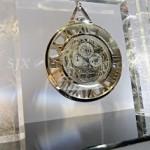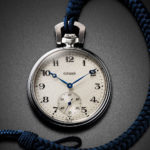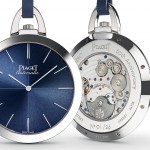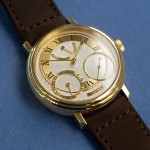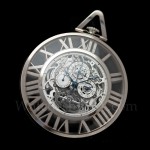Up Close: Citizen 100th Anniversary Pocket Watch
Vintage inspired and impressively executed.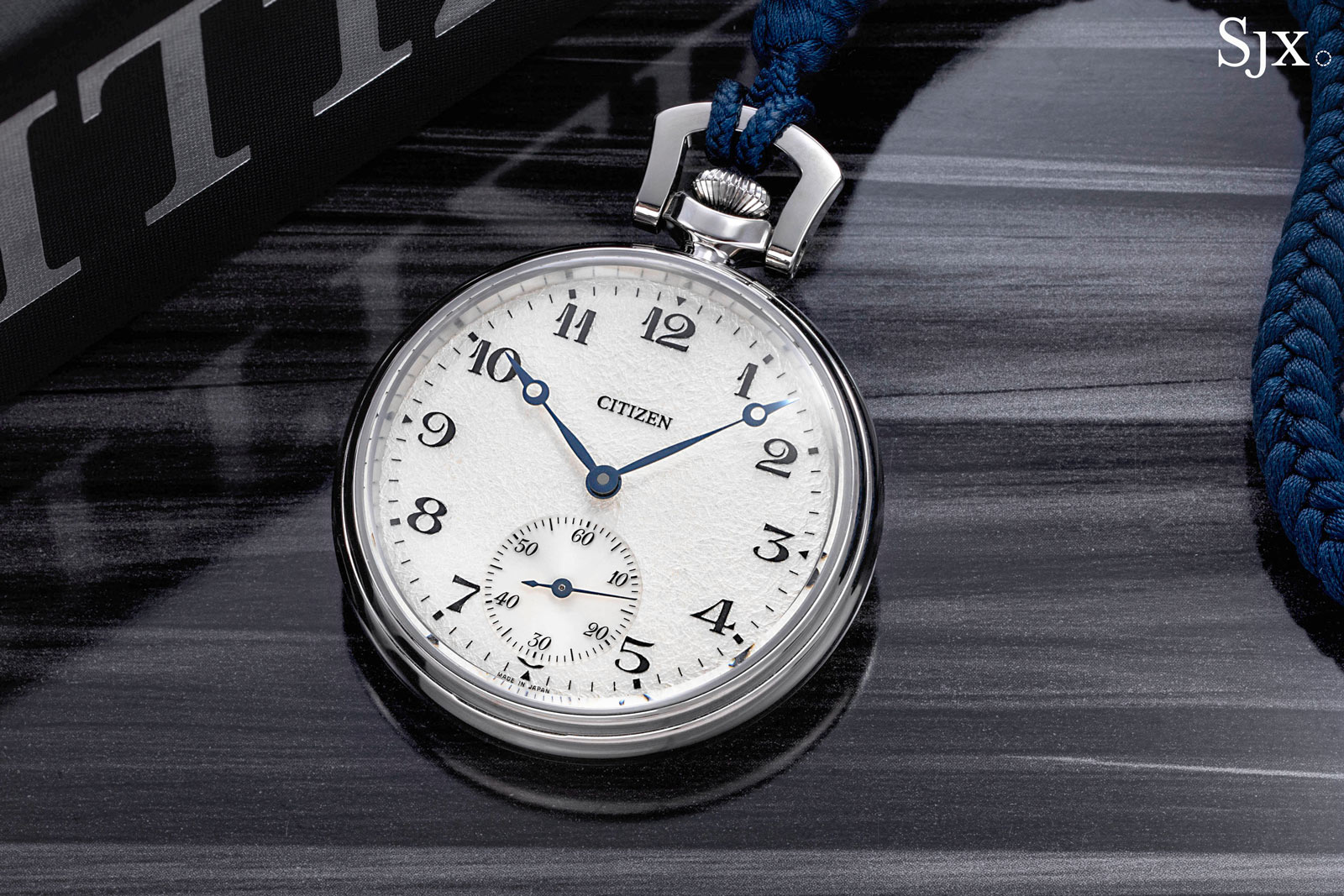
Historically known for cutting-edge solar-powered watches – including the most accurate wristwatch ever – Citizen has more recently embarked on growing its lineup of mechanical watches. That began with the well-received Calibre 0200 wristwatch, and continued this year with the 100th Anniversary of the First Citizen Watch Special Limited Edition, a vintage-inspired pocket watch equipped with the all-new cal. 0270 movement.
Initial thoughts
The anniversary pocket watch is surprising: the watch isn’t quite what it appears to be. At a distance it could pass for a vintage pocket watch, albeit a new-old-stock example, reflecting a design that stays faithful to the aesthetics of the railroad pocket watches that Citizen supplied to Japanese railways in the 20th century.
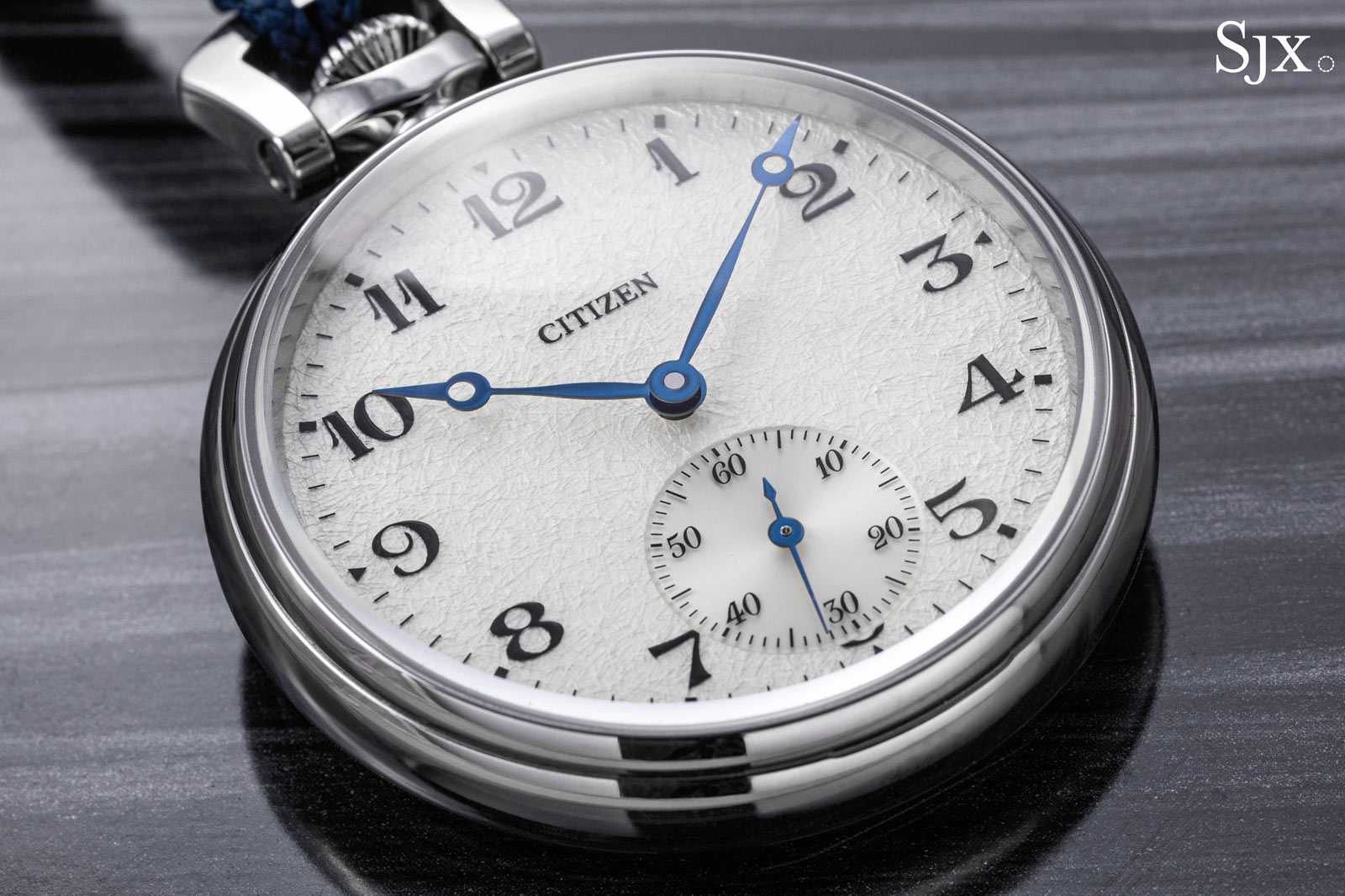
However, it reveals itself to be a modern watch up close, firstly because of the unusual dial texture that mimics Japanese paper but is actually achieved with metal deposition.
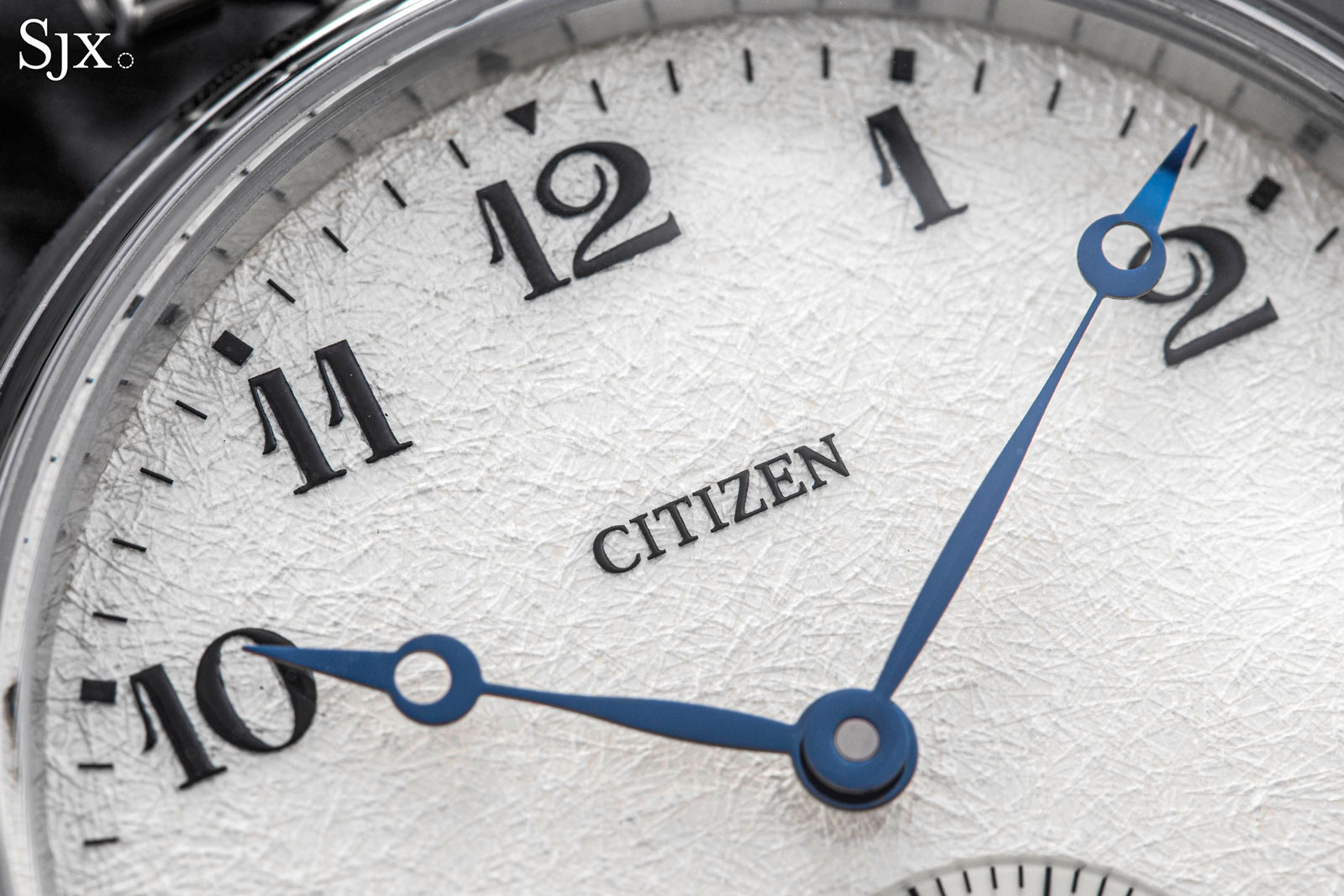
More importantly, the cal. 0270 is a newly developed movement. It was evidently constructed with old-school pocket watches in mind, but it features modern elements like a free-sprung balance and sharply-shaped bridges.
As with the automatic cal. 0200 before, the quality of construction and finishing of the cal. 0270 is impressive, especially given the price. Amongst hand-wind movements in the US$10,000-and-below category, the cal. 0270 easily ranks amongst the best.
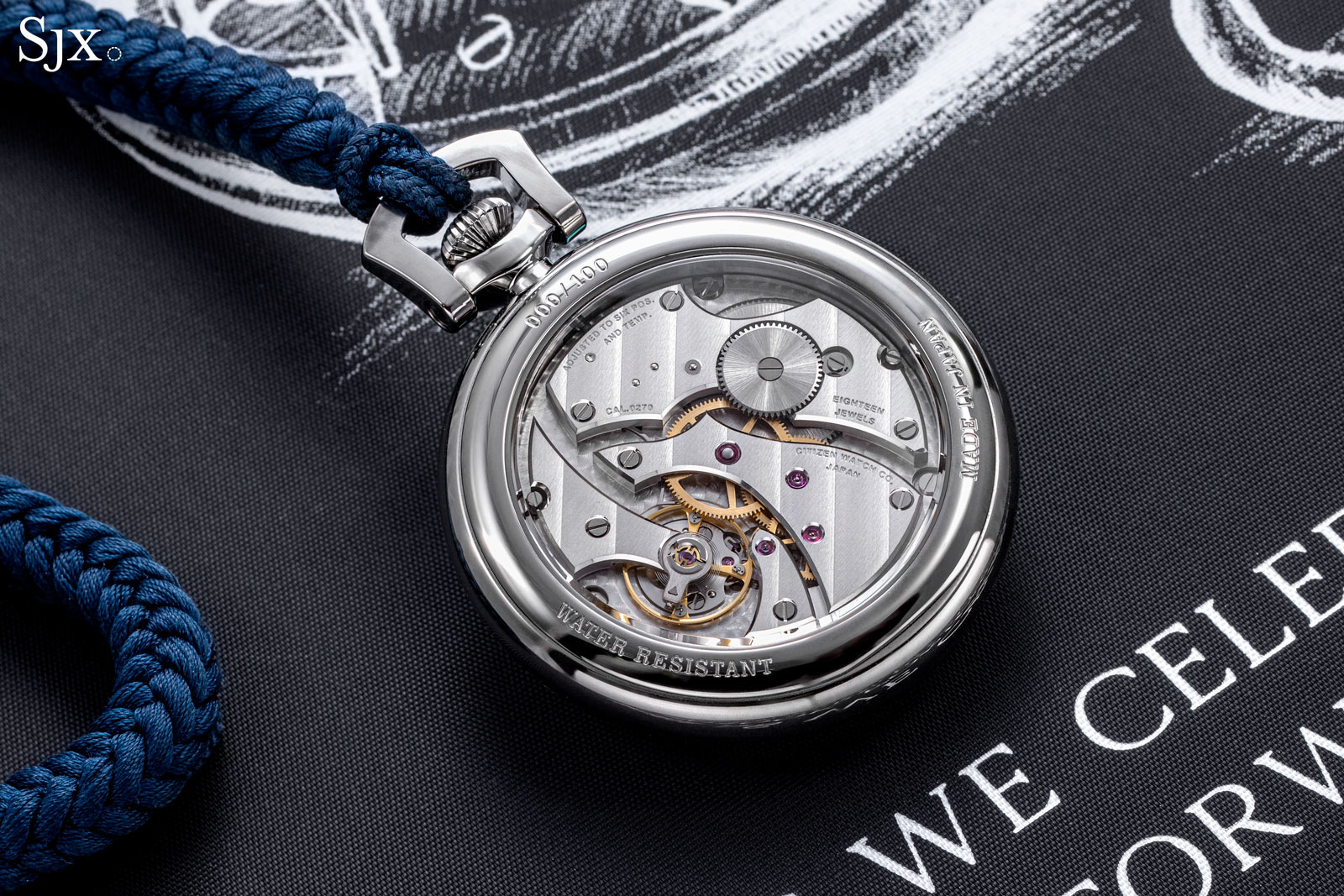
However, the anniversary pocket watch is still a pocket watch, which means it’s not as practical for modern lifestyles as a wristwatch. The cal. 0270 is small enough for a largish wristwatch, which would be a winner, especially if it stayed in the same price segment as the pocket watch.
Railway timekeepers
The styling of the anniversary pocket watch takes its cues from the railway pocket watches that Citizen (and also Seiko) made for Japanese railway companies. No frills but extremely precise, these watches were varied in details but shared a uniform aesthetic: legible white dials with high contrast, oversized Arabic numerals. Notably, Japanese railways continue to use pocket watches today, but with quartz movements having long replaced the hand-wind calibres of before.
The anniversary pocket watch sticks closely to traditional aesthetics, right down to the braided silk cord that is the traditional method of wearing a pocket watch in Japan, replacing the Western-style metal chain. The cord in some ways is even more resolutely traditional than the watch. It’s made of pure Japanese silk that’s been dyed indigo blue in a traditional manner. And it’s made by Domyo, a Japanese braid maker that’s been in business for some 400 years.
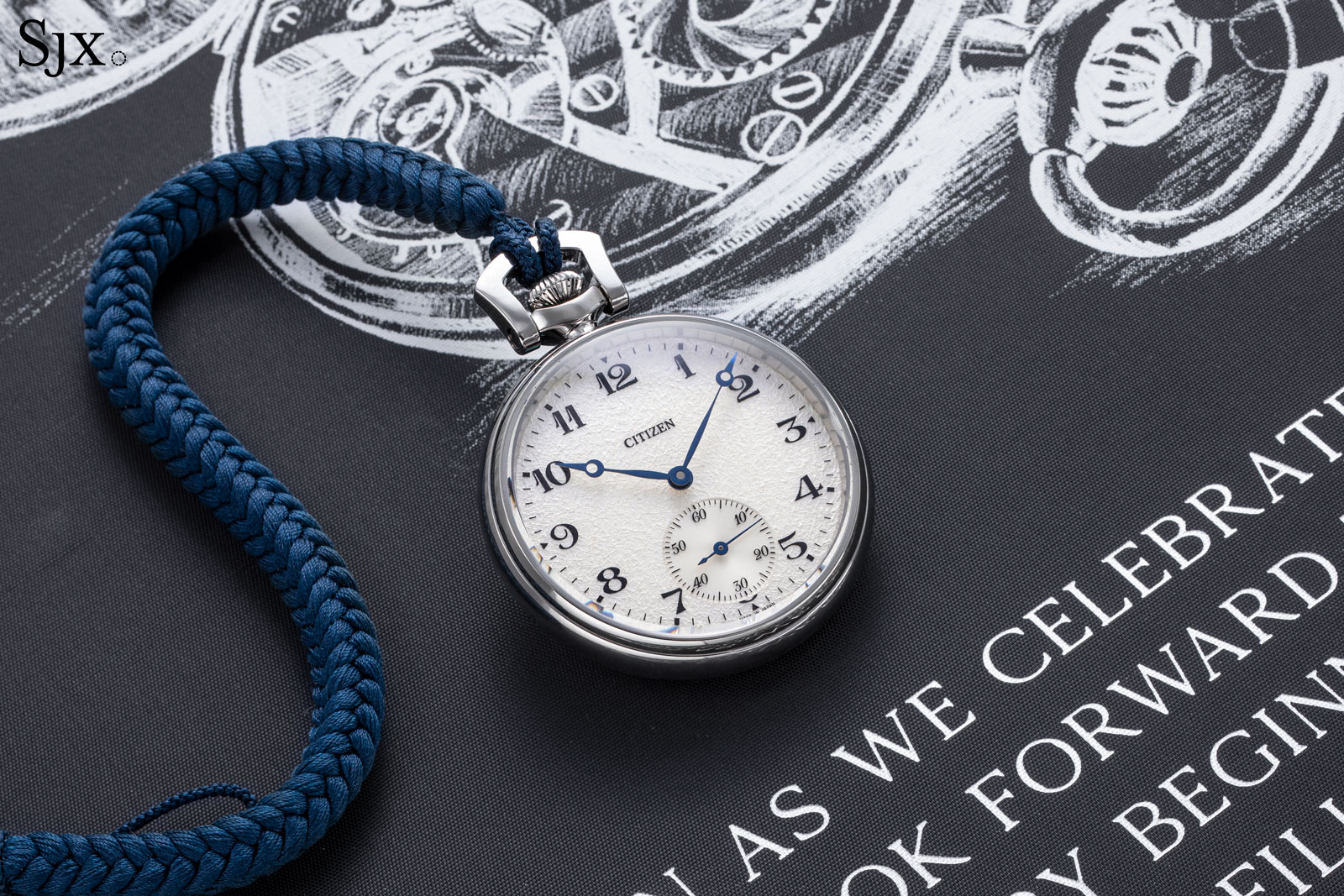
The execution of the watch, however, is entirely modern. The case is entirely in polished titanium, including the onion crown and horseshoe-shaped bow.
Measuring 43.5 mm in diameter and 13.4 mm high, the case is relatively compact for a pocket watch – which also means the movement can be transplanted into a practically sized wristwatch. Because it’s titanium, it is also relatively lightweight, which makes it easy to wear. That said, the polished, rounded surfaces of the case don’t result in perfect grip, so it would be wise to fasten the silk cord properly before tucking this into a suit or kimono.
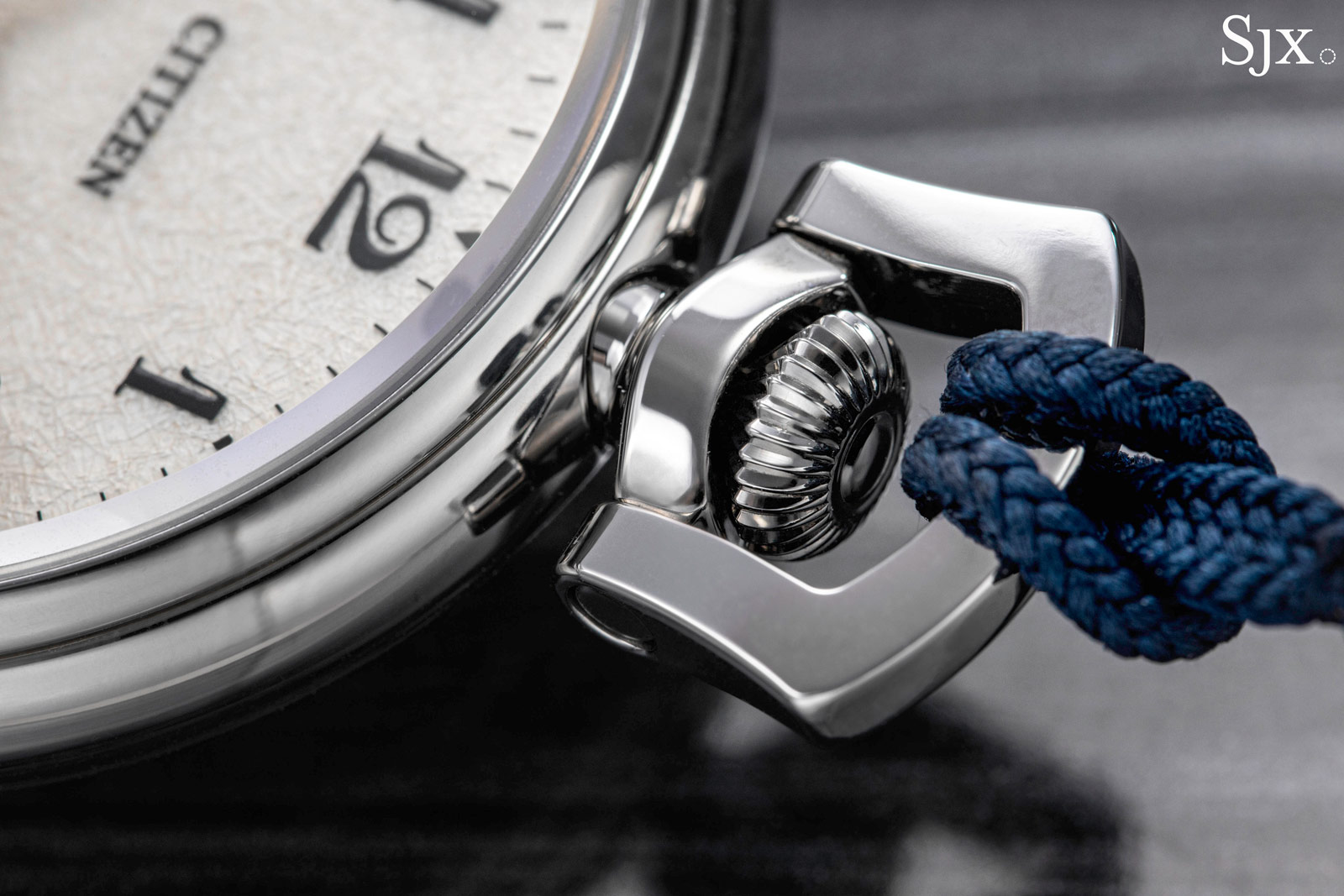
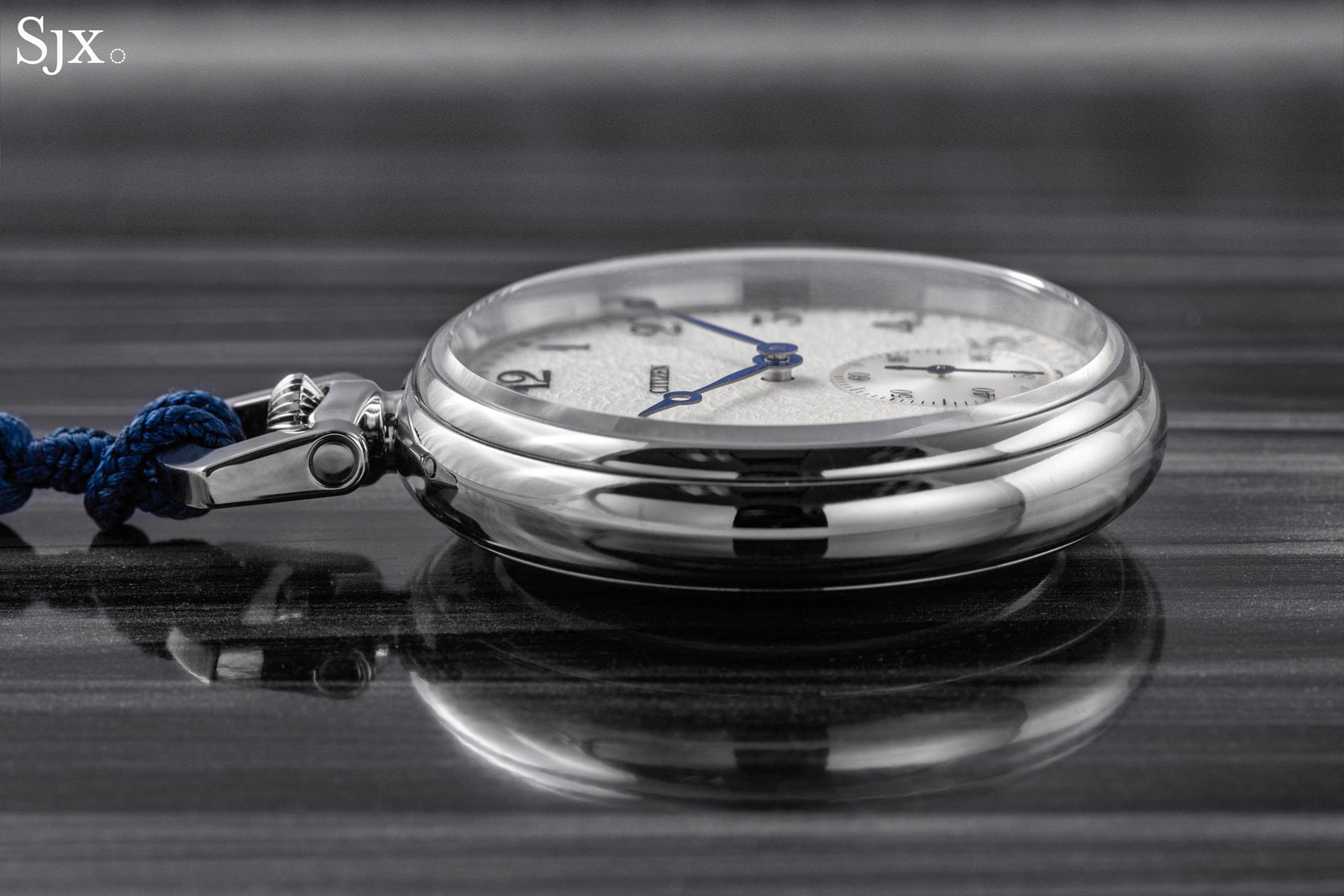
In contrast to the cleanly finished case, the dial reveals an intriguing surface finish that resembles Japanese paper or even the veins of a leaf. According to Citizen, the texture is achieved via electro-deposition – essentially a type of high-tech plating that deposits the metal on the surface to create the unique pattern.
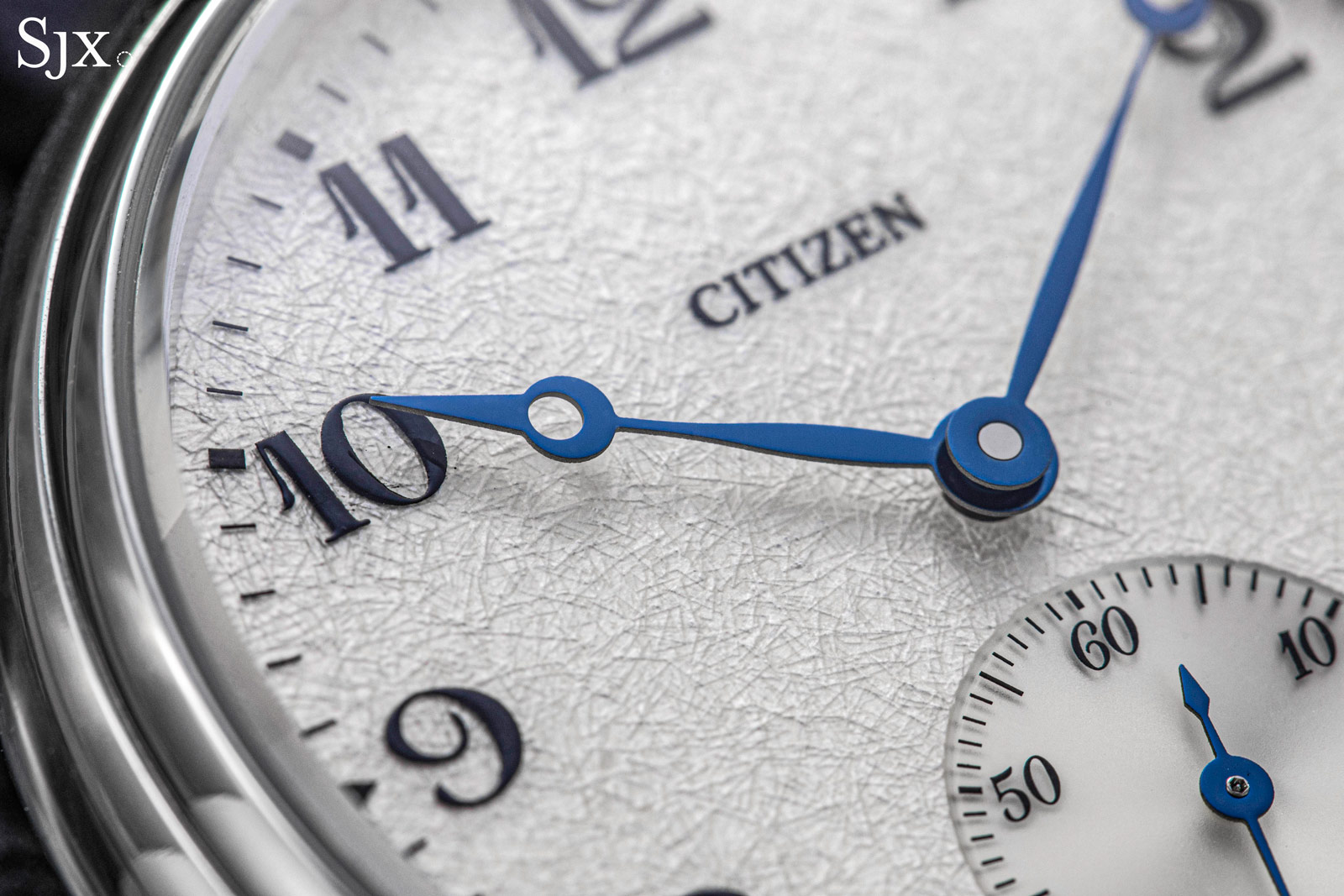
Then a thick layer of clear varnish is then applied on top of the electro-formed surface, followed by baking in an oven to set the varnish. The dial is then lapped to smoothen the surface, after which the numerals and scales can be printed. The result is a shiny dial surface that has a surprising lustre, which in turn emphasises the pattern on the dial.
Notably, the layer of varnish is substantial enough that it is visible under magnification. The varnish results in the printed markings appearing to float above the surface of the dial. In fact, the varnish is thick enough that the printing markings cast a shadow on the dial base at certain angles.
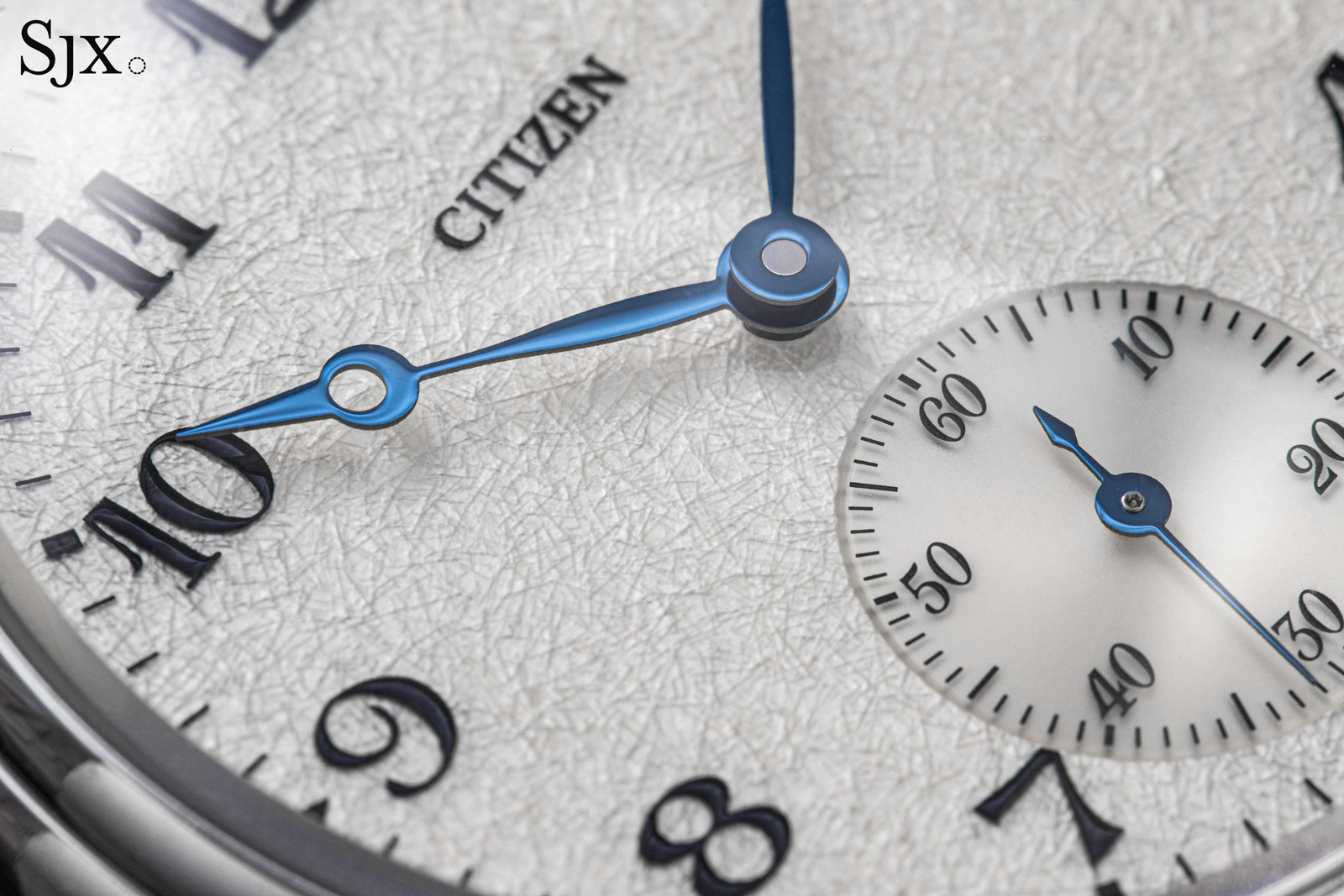
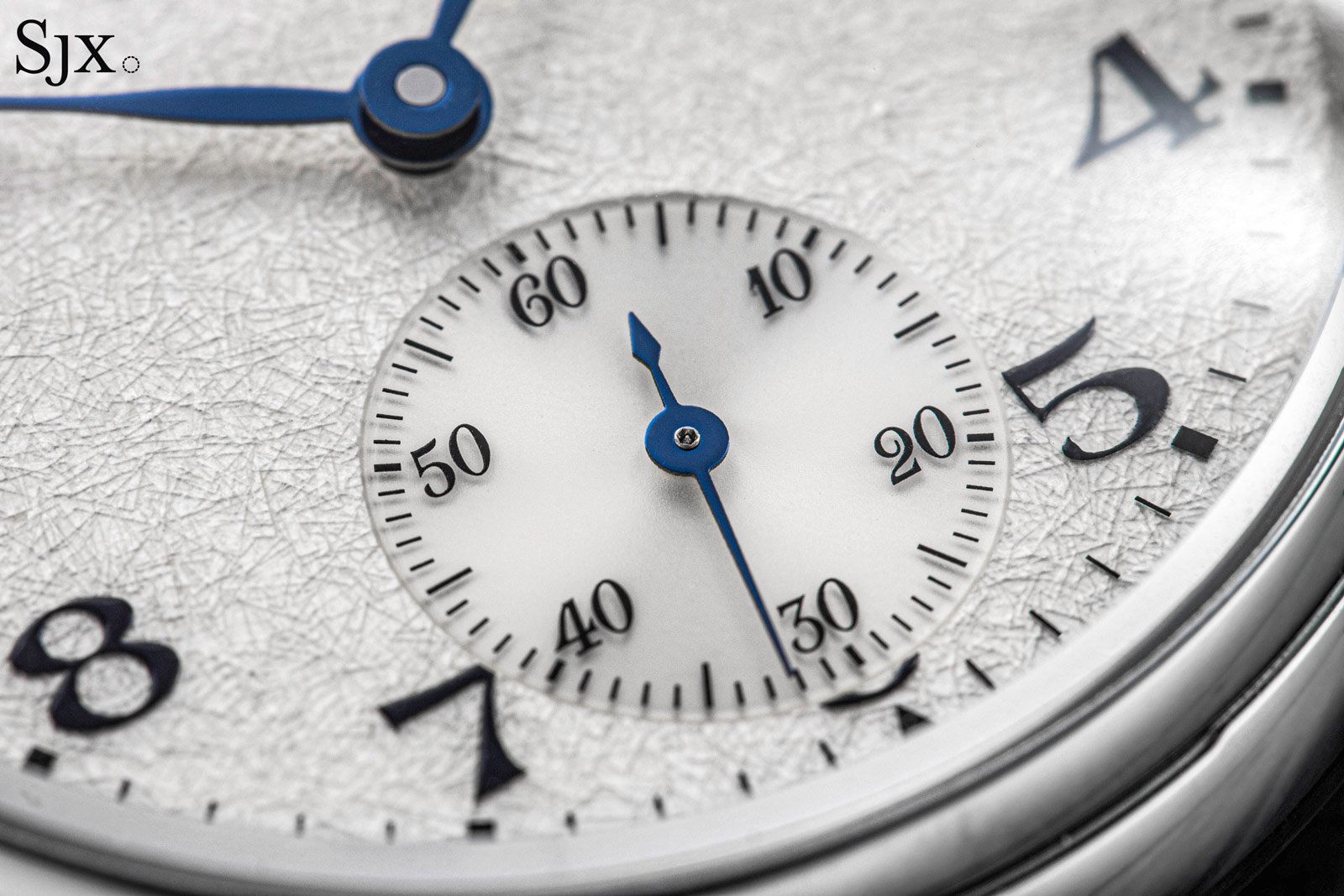
The cal. 0270
The in-house, hand-wound cal. 0270 is interesting because it is simultaneously traditional and modern, while managing to be cohesive. It is a time-only calibre that is pure in both purpose and aesthetics, which suits the anniversary pocket watch perfectly. The movement shares a handful of elements with the cal. 0200, and like its automatic cousin, the cal. 0270 was developed with some input from Swiss movement maker La Joux-Perret, which Citizen acquired in 2012.
While simple in function, cal. 0270 still presents notables technical details and styling choices. The movement adopts the basic layout of a textbook Lepine calibre, with a directly-driven seconds hand at six o’clock, and the going train spread out over the main plate and held in place by separate bridges and cocks.
The cal. 0270 has a generous diameter relative to the size of its components, meaning the parts can be spaced out on the base plate. This adds to the visual appeal as the bridges and cocks are set apart far enough to reveal the movement parts below.
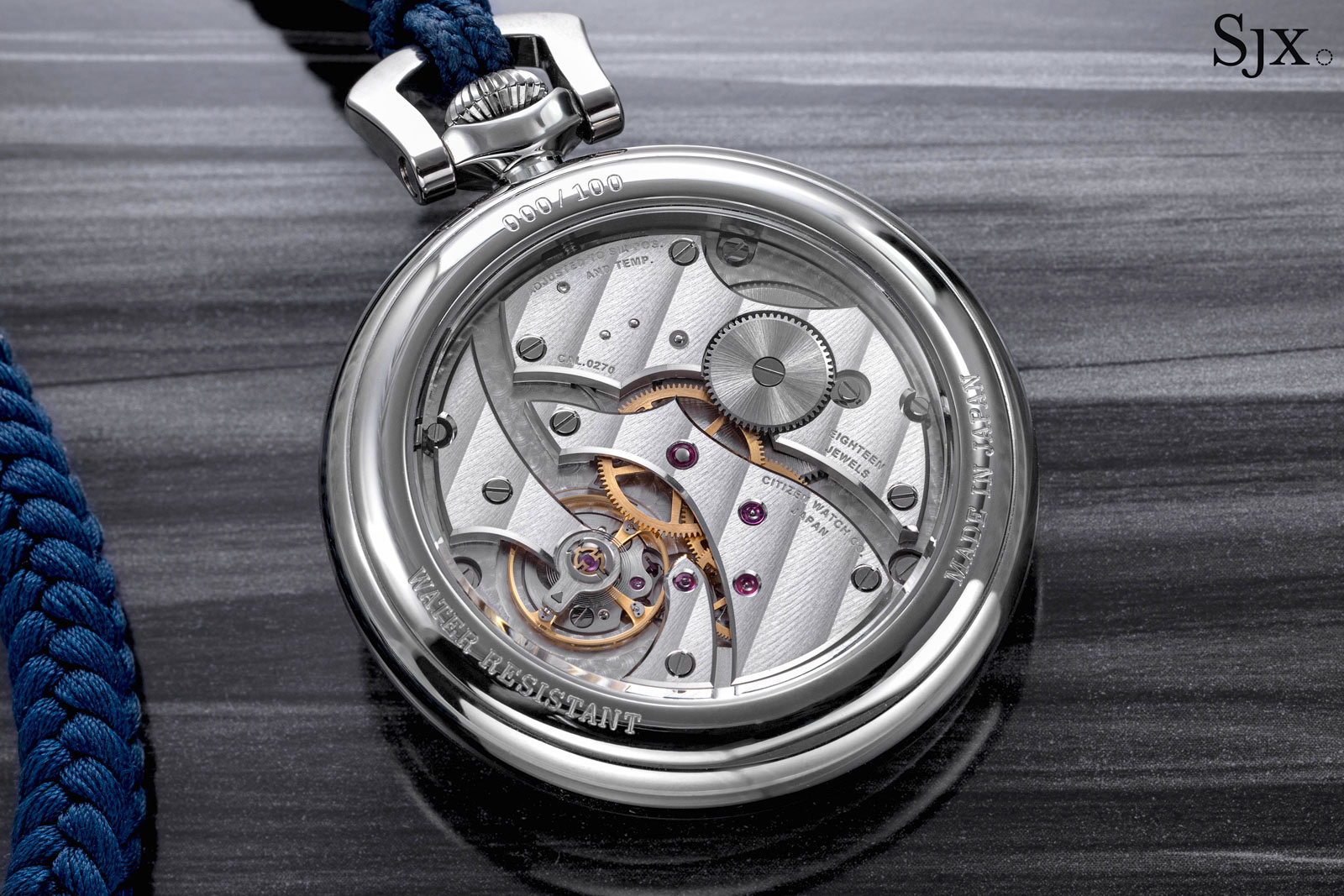
The calibre is dominated by two large bridges for the barrel and going train respectively, a finger bridge for the escape wheel, and a balance cock – an entirely traditional architecture.
Notably, the finger bridge for the escape wheel is a historically accurate design choice that is not merely cosmetic. It isolates the escape wheel from the rest of the going train, making it easier for watchmaker to access the escapement during assembly and service.
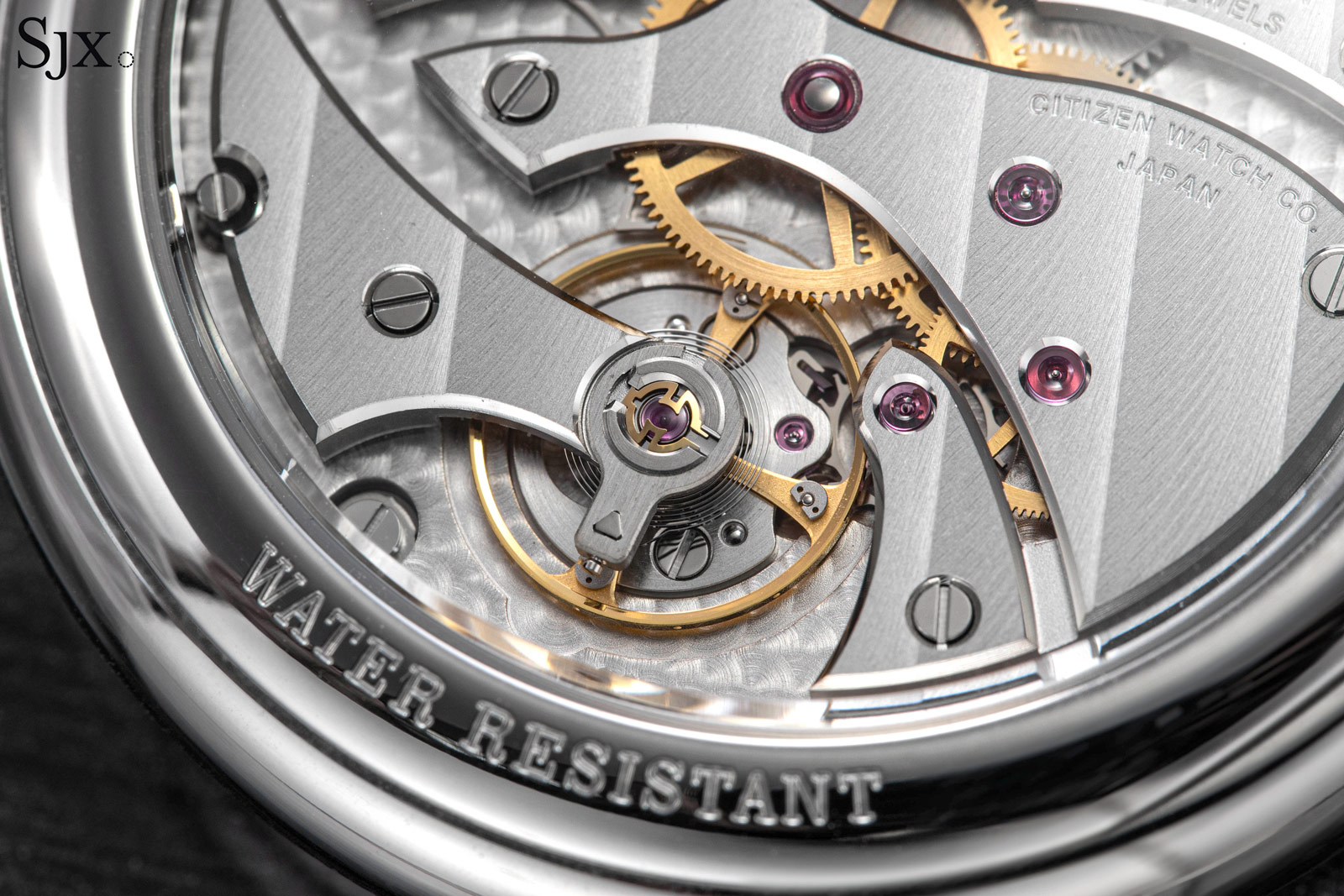
The escapement components are nickel alloy and fabricated via LIGA, a lithographic technique well suited for tiny, precise parts. techniques. Given the traditional styling of the piece, the choice of alloy escapement parts, as opposed to modern materials like silicon, is sensible.
The regulator is perhaps the most modern trait of the cal. 0270. The balance beats at 4 Hz, or 28,800 beats per hour, which is the norm today.
But more appropriately for a high-end movement, the balance is free-sprung with four variable inertia weights. The regulating masses are arranged in twos: one pair for general regulation of the rate, and another pair of smaller weights for finer tuning.
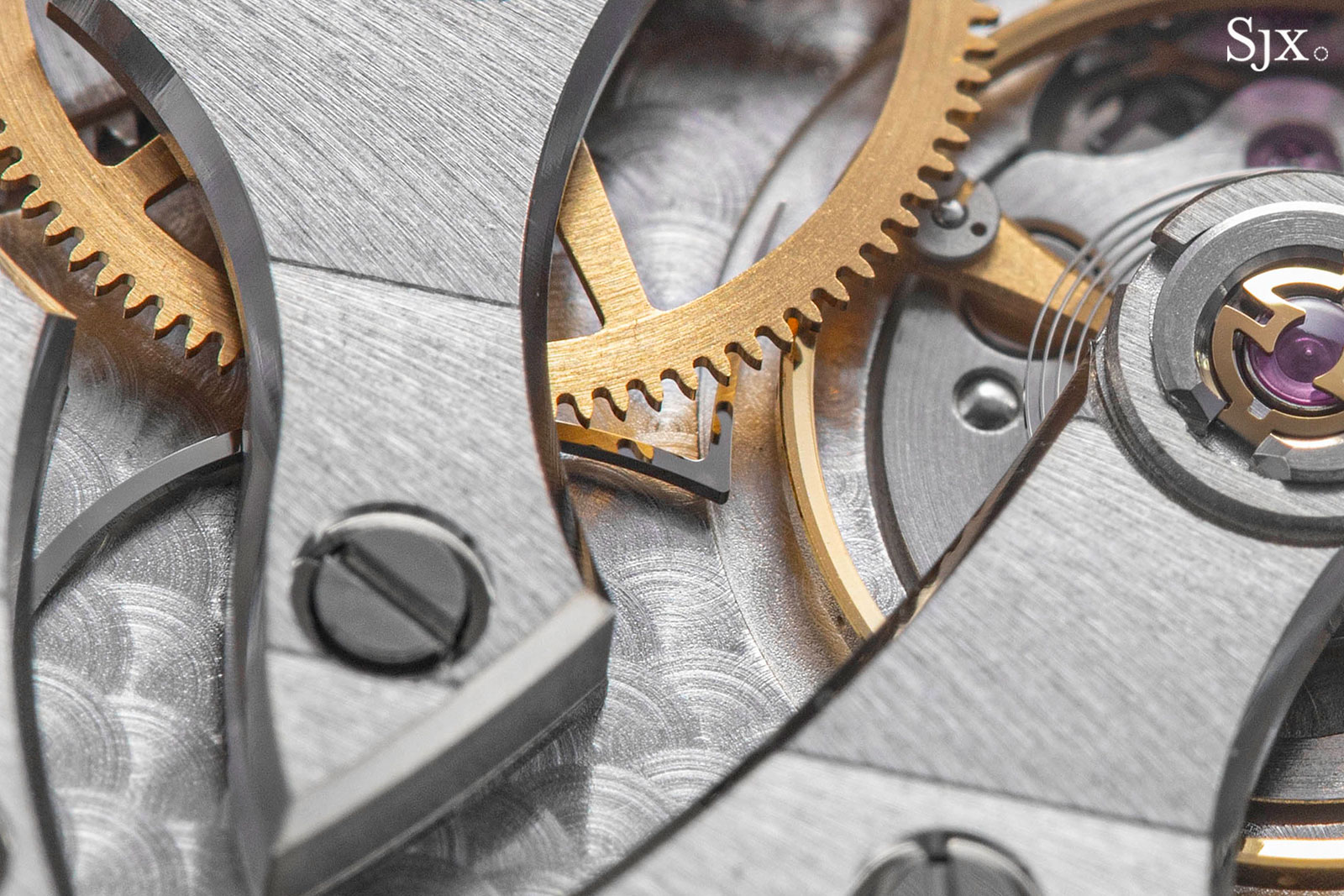
The hacking lever linked to the keyless works, which stops the balance for time setting
According to Citizen, the cal. 0270 was modelled on the cal. 016 of 1924, the first pocket watch movement developed by Citizen. This gives the cal. 0270 a traditional appearance at a glance, but up close the movement shows off details that subtly differentiate it from classic pocket watch movements.
The most obvious being the shape of the bridges, which are distinctly non-Swiss. They are formed with sharp corners and pronounced curves in an asymmetric composition, bringing to mind weapons in Japanese sci-fi manga.
This styling is most pronounced on the largest bridges. The barrel has an off-centre cutout for the barrel ratchet wheel, while the going train bridge has a sharp horn that is off-centre relative to the centre wheel. These design accents make for a curious — yet appealing — asymmetry.
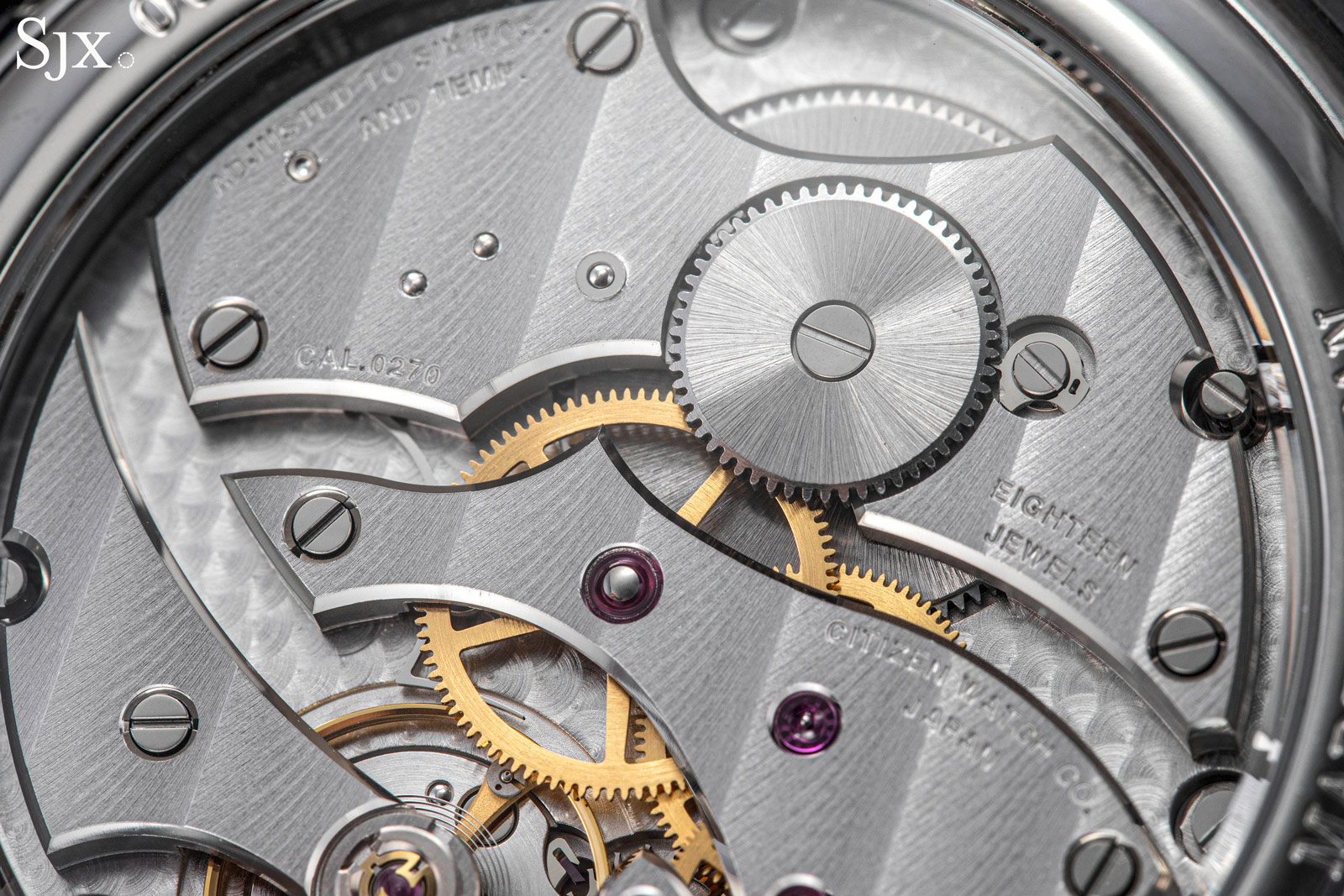
Another notable detail of the construction is the concealed intermediate wheel (that links the keyless works for winding and setting with the barrel ratchet wheel). In an uncommon design choice, the intermediate wheel is hidden under the barrel bridge. This leaves the barrel looking like it’s winding all by itself, since there is no visible connection to the crown.
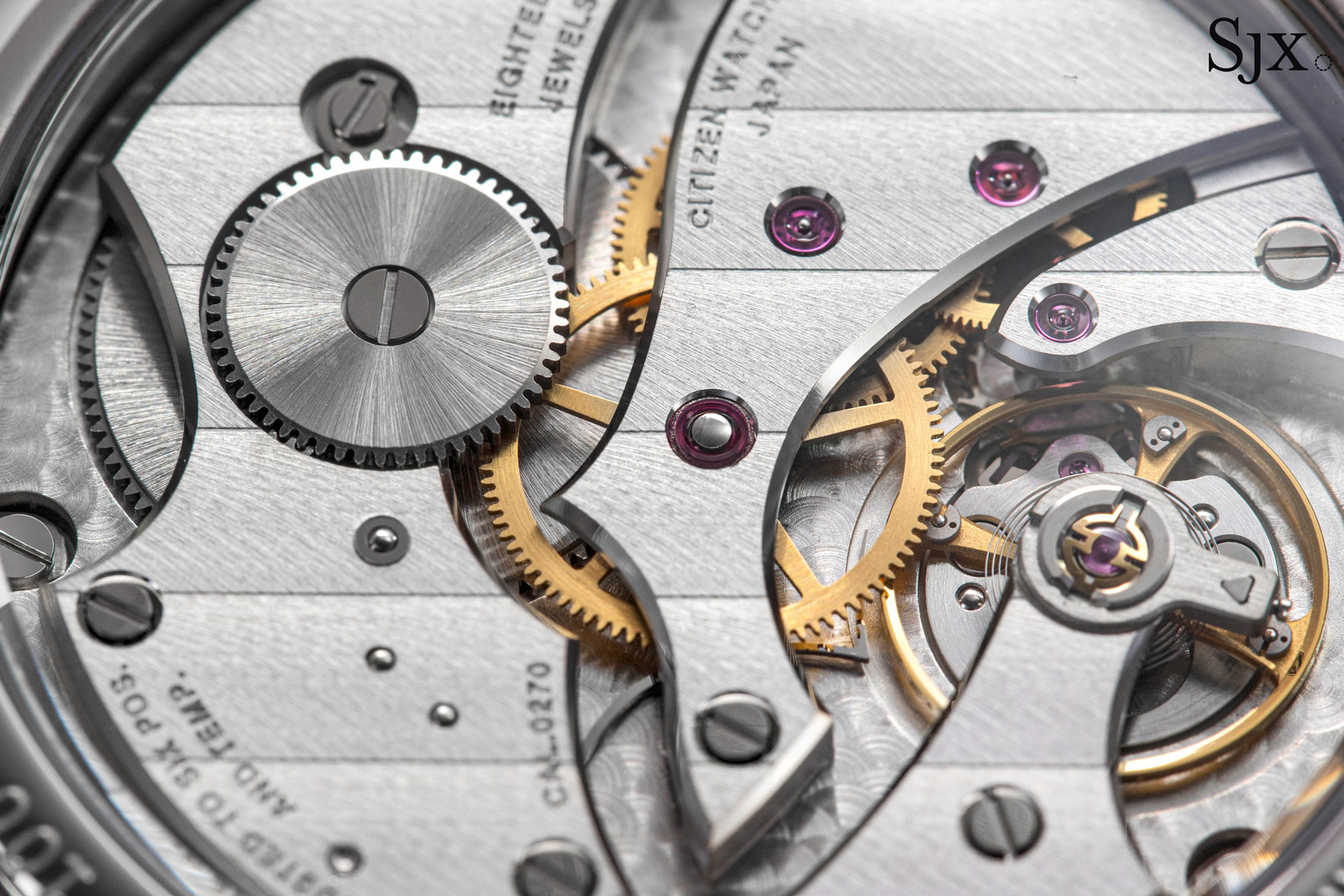
Echoing the finishing found in the automatic cal. 0200, the decoration of the cal. 0270 is sharp and tidy – and impressive for a watch priced at US$9,000.
Though applied by machine, the finishing is appealing and covers practically all visible surfaces. It’s typical of modern decorating standards, but superior to comparably priced Swiss watches. As an example, the wide, bevelled edges on the bridges are milled, but reveal only the faintest of machining marks that are barely visible, even under magnification.
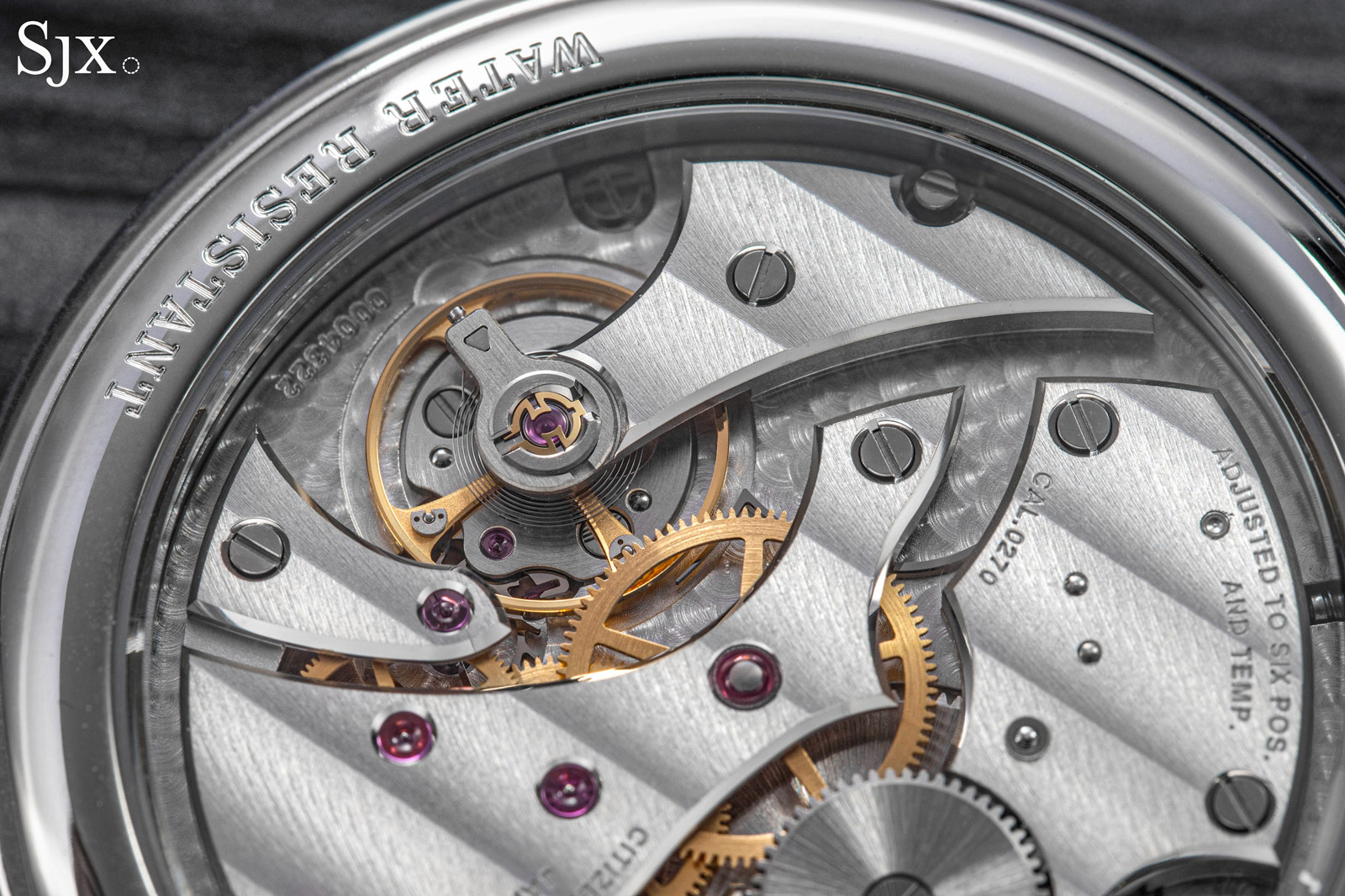
The thorough finishing starts at the base, with the main plate covered in perlage and secured to the case with screws showing polished and chamfered heads. The bridges are covered with Geneva stripes, carefully applied such that the stripes continues from one bridge to another despite being spaced apart. All screw heads are polished and chamfered, and sit in bevelled countersinks. The barrel cover and ratchet wheel are finished with a solarised pattern.
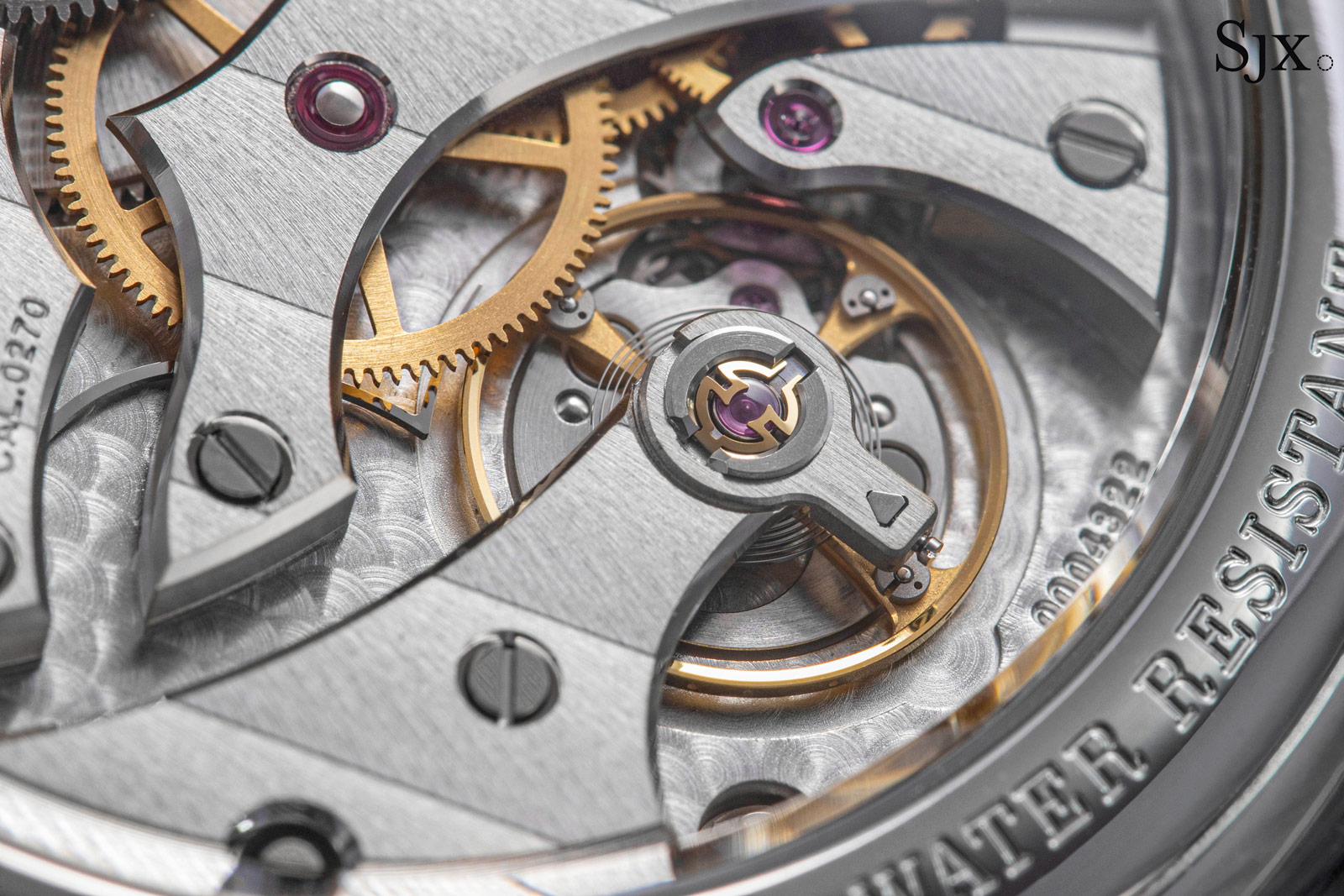
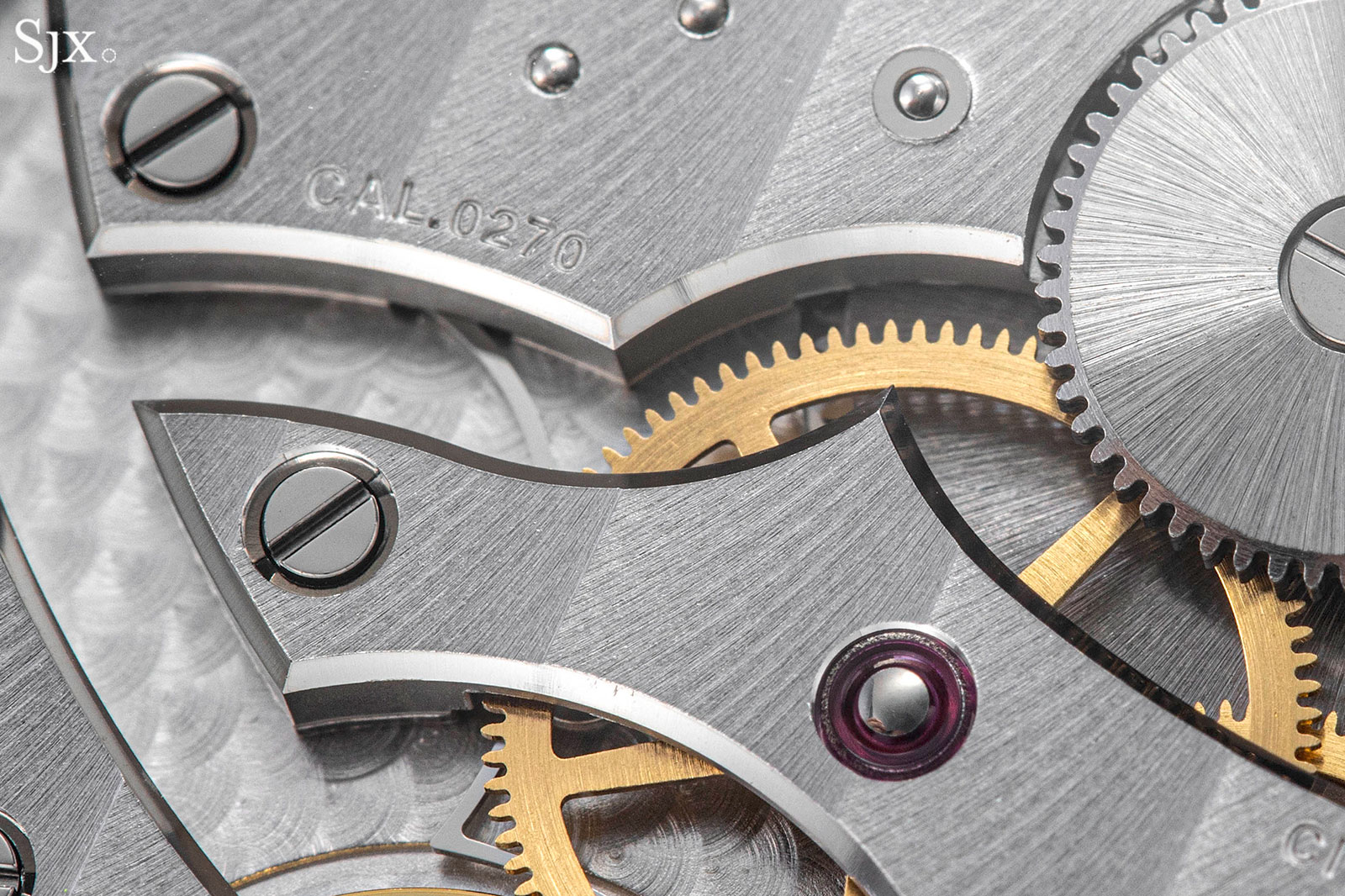
All of the details in the cal. 0270 are not merely cosmetic. According to Citizen, each completed anniversary pocket watch – and not just the cal. 0270 – is tested over “17 days… in six different positions and at three different temperature levels”, during which it has to run within -3/+5 seconds a day, which is more stringent than the COSC standard of -4/+6 seconds over 15 days. Each pocket watch is then delivered with a “Caliber 02 Standard Certification” attesting to the testing process.
Concluding thoughts
Living up to the high standard in terms of quality and value established by the Calibre 0200, the anniversary pocket watch and cal. 0270 illustrate Citizen’s progress in mechanical movements. I’m certain that I am not the only one hoping to see the cal. 0270 in a wristwatch – here’s hoping that comes sooner rather than later.
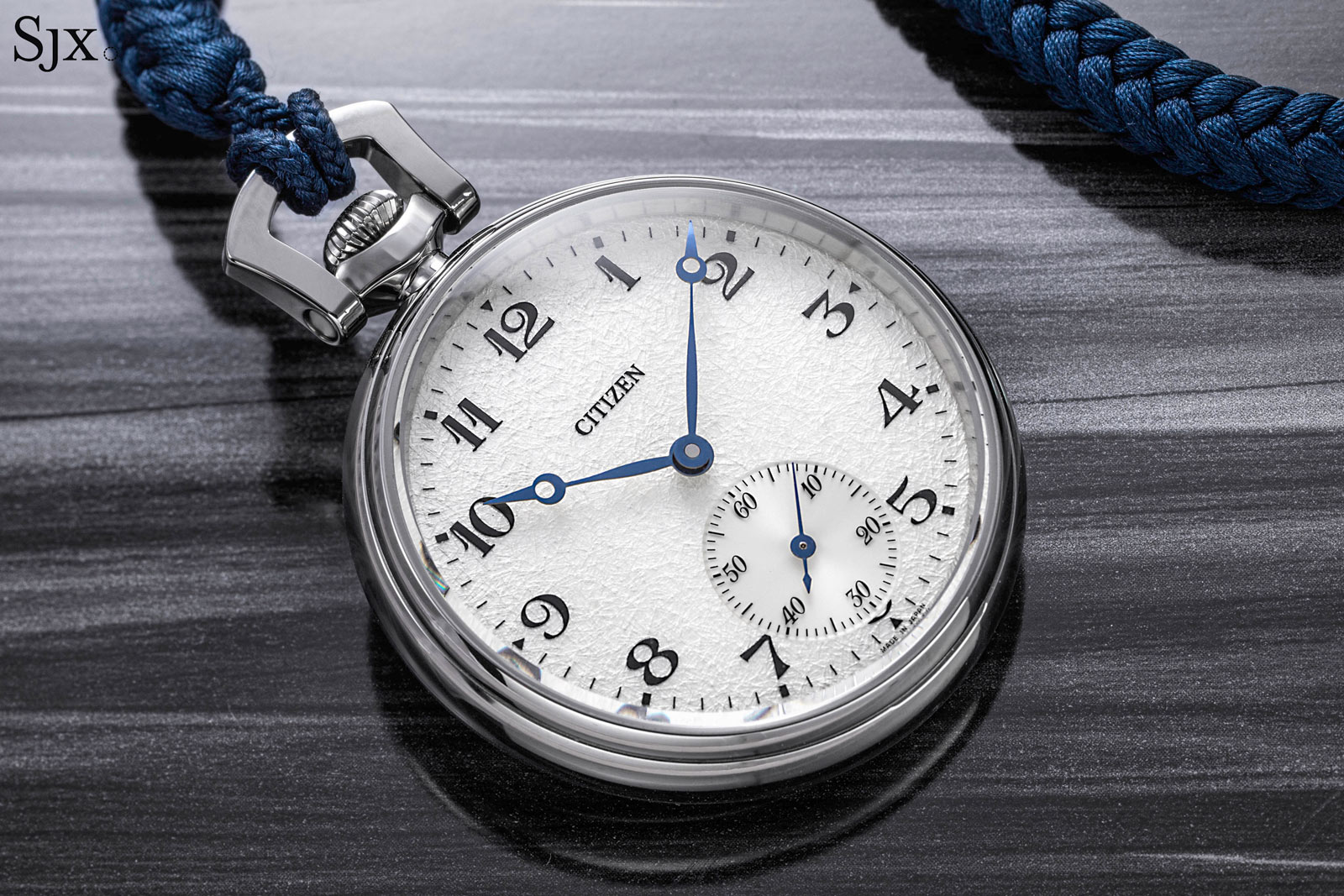
Key facts and price
Movement: Cal. 0270
Functions: Hours, minutes and seconds
Frequency: 28,800 beats per hour (4 Hz)
Winding: Manual wind
Power reserve: 55 hours
Attachment: Braided cord of Japanese silk
Limited edition: 100 pieces
Availability: Now at Citizen boutiques and retailers
Price: US$9,000; or 1 million Japanese yen, excluding taxes
For more, visit Citizenwatch-global.com.
Back to top.

